Every EV and PHEV eligible for zero fringe benefits tax in Australia today
In this report: The full list of 30 electric vehicles (EVs) and plug-in hybrids (PHEVs) that qualify for the government’s zero-FBT green car stimulus package. This will make shopping for your next new eco-car much easier.
Below, you’ll find every EV and plug-in hybrid I could find in the market today, which qualifies for the Federal Government's new ‘zero fringe benefits tax’ eco car incentive. That’s right, electric vehicles just got thousands cheaper for ordinary Australians
I've been on a quest to demystify novated leasing, and the eligible vehicles, because so many people are doing this for the first time. It's the market responding to government policy change, basically, and as a result, there's so many people thinking about jumping into an EV or a plug-in hybrid right now.
Jump down to the start of the list
Also, there's now a bunch of employers who are thinking about setting up a novated lease program for the very first time and many of those people are also asking ‘Where do I start?’
My advice? Start with my EV Sanity Check: Is an electric vehicle really right for you? This way you’ll know if you should embark on this fundamental powertrain change for your daily transport needs.
NOVATED LEASES
To take advantage of the zero-FBT stimulus package, you have to acquire the car using a novated lease, which is also called ‘salary sacrifice’.
Novated leases are a dead simple concept. You just get to liberate some pre-tax income to help you make the payments on the new car. This means that some of the money you would have otherwise paid in tax gets devoted to the acquisition of the new vehicle. It’s a direct benefit to you because it makes an EV/PHEV the same effective price as an ordinary combustion or hybrid car.
Another huge plus is that in many cases, you eliminate the GST entirely up to a benefit of $5885 - and it's hard to see an ordinary Australian on a salary eliminating the GST from car acquisition any other way.
If you know enough to get started, at this point you should also check out my report (right): Novated Lease basics: The eco car LCT threshold explained in full so that you’re aware of how to avoid making a significant mistake when signing the contract - a mistake that could cost you tens of thousands of dollars in lost savings. You’ll also get a detailed understanding of how the pricing policy actually works in relation to the threshold - what’s included and what’s excluded.
Having done that, you’re ready to consider the vehicles on my comprehensive list of eligible EVs and PHEVs priced below the Luxury Car Tax threshold of $84,916.
When you’re ready to enquire, fill in the form below, and my team will get back to you ASAP.
ENQUIRE HERE
THE FULL LIST
1. BYD Atto 3 (EV): both Standard & Extended
Both the ‘Standard’ and the ‘Extended’ range versions qualify. The Standard has a 50 kilowatt-hour battery, the Extended has 60 kilowatt-hours: it's 20 per cent more. So it's going to cost you about $3000 more to go for the Extended, but you may not need to do that depending on the type of vehicle operation that you foresee actually doing.
The biggest question mark I have about BYD, like with all emerging brands, is how are they at looking after their customers. Do they have a decent spare parts inventory, what's the reliability, quality and customer support going to be like? If you jump into bed with an emerging brand/manufacturer, in a sense, you're a lab rat - and you're running that experiment.
The price is right with BYD, but because there’s not enough data, I’m unaware about whether or not everything else is going to be right in respect of the ownership experience - especially if something goes wrong with the vehicle.
2. Cupra Born (EV)
Cupra Born is the EV model from this emerging brand here in Australia, but you should be aware Cupra is part of the Volkswagen Group. The Born has 77 kilowatt-hours of battery capacity, which is quite a large battery, and it’s about $60,000 plus on-road costs, so that seems quite reasonable.
Like with many of these order-only EVs and PHEVs, the Born requires a $1000 reservation deposit, $250 of which is non-refundable according to the brand’s official Australian website.
Cupra claims 511km of range, but it’ll be more like 450-480 in the real world, driving for economy - not that anywhere on their website does it encourage a cool driving temperament, especially when suggesting it’ll do 0-50km/h in 2.8 seconds.
Save thousands with a novated lease on a Cupra Born
3. Cupra Leon VZe (PHEV)
This plug-in hybrid also qualifies, although it's got a comparatively small battery, at 12.8 kilowatt-hours. The thing about PHEVs is that, ideally, you really want the maximum EV-like operational window, meaning: biggest battery you can find, because you want to be in EV mode for most of your driving around town. Then, for the rest of the time, when you want to go out and travel in the regions, perhaps to visit relatives, attend functions, catch up with the girls at some winery - whatever - you want to be able to do that as well but without the burden of having to give a damn about recharging.
In other words, the main advantage of a PHEV is that you can drive in places where there is limited charging infrastructure - without risking getting stranded, or held up for hours.
Therefore, the size of the battery in a plug-in hybrid really matters because it affects two things:
The discharge rate, meaning how aggressively you can drive in traffic without kicking the internal combustion engine into play.
How far can you physically drive in EV mode before the battery is fully depleted.
The Cupra Leon has a comparatively small battery
Save thousands with a novated lease on a Cupra Leon
4. Cupra Formentor VZe (PHEV)
Formentor has the same size battery as the Leon, but it’s a different model vehicle. Cupra claims 58km of EV-only mode, but it’ll be closer to high-40-something in real-world traffic, if you’re lucky and it runs only a 40-litre fuel tank (that accepts comparatively expensive 95 RON premium unleaded). It also gets a tyre repair kit, so not even a space-saver spare tyre, which is typical of virtually all EVs and PHEVs, to be fair.
Also, it’s front-drive only and does 0-100km/h in 7 seconds, if that interests you.
These three Cupras qualify in terms of being under the LCT cap and my comments about Cupra are the same as with BYD. They're an emerging brand in this market, so how well they look after their customers and how well they support their vehicles with spare parts inventory, technical training for dealers, access to qualified service technicians and so on - this all matters, and is thus far unknown.
5. Ford Escape ST-Line (PHEV)
Pro Tip: Don’t let the heavy charger cable box dangle from the power point like that, unless you enjoy prematurely wearing out the cable, plug and wall socket. Rest it on something.
There's one Ford that qualifies for the FBT incentive (and it’s not the F-150 Lightning). It's the Escape, and the single variant on offer is the ST-Line plug-in hybrid, which has a respectable battery at 14.4 kilowatt-hours, so somewhat bigger than the Cupra PHEV.
Ford Australia claims Escape PHEV can travel up to 56km in EV-only mode, so taper that back to high-40s in the real world. They also suggest 1200kg of maximum braked towing capacity. (Towing this much will obviously shred real-world EV range.)
Let's talk about the Ford brand briefly, because Ford's biggest problems are reliability and customer support. They're comparatively poor at this, and there's no evidence they've completely reinvented themselves for their forthcoming eco car line-up.
With the Ford Escape you get a fundamentally decent mid-size SUV to actually drive, as in straight off the showroom floor, plus there's a big dealer network, but if you've got a legitimate problem it can be very difficult getting a decent resolution out of the whole Ford apparatus, despite all the big Blue Oval signage and historical reputation it loves to leverage in regards to its pick-up trucks etc.
Take that for what’s it’s worth.
6. Hyundai Kona Electric: Elite & Highlander, Standard & Long Range (EV)
All variants of the Kona Electric are within the zero-FBT price envelope. That would be the Elite and the Highlander, including the standard battery and the long-range battery as well. So if the ‘small block’ isn’t going to be enough at about 39 kilowatt-hours, then the big block at 64 kilowatt-hours will probably better suit you, and you still won’t have to worry about the price ceiling.
For context, that 64kWh battery has about enough range to get you to Canberra from Sydney, so roughly 300kms on the highway, albeit running very low on electrons when you arrive into the capital.
I drove the big battery Hyundai Kona Electric for about a year and that taught me a lot about the practicalities of EV ownership. It's very satisfying to drive, it's got reasonably good dynamics, although it is adapted from a combustion platform so there are some compromises. However, I found these were improved significantly when I replaced the eco tyres with performance tyres, which basically transformed the vehicle, dynamically, and it hardly affected the range at all, at least insofar as I could measure it.
You might get away with the small 39 kilowatt-hour Kona for just regular commuting every day of the week; just plug it in overnight and it’ll be charged up before breakfast, and good to go again.
Also, there’s a new Kona Electric right around the corner, so watch for that…
Save thousands with a novated lease on a Hyundai Kona Electric
7. Hyundai IONIQ 5 Dynamiq & Techniq (EV)
The IONIQ 5 is interesting because it's the first Hyundai developed on the EV-only platform called ‘e-GMP’. It's got great dynamics, drives beautifully. But it's freaking huge. You look at an IONIQ 5 in the distance and you think it's a bit of a hatch, but as you get closer you quickly realise it’s almost as big as a LandCruiser and the car industry has even classified it as an SUV. (Go figure; I doubt too many will visit Cape York…)
Two variants of IONIQ 5 qualify: the Dynamiq and the Techniq, so the base model and the mid-spec, respectively. But if you opt for the Epiq, which is the top-spec, you'll blow the price cap.
Hyundai Australia has extreme difficulty getting supply of IONIQ 5 (and 6) at the time of writing. So much so that they sell these cars in so-called ‘drops’, online only. It’s as if they’re limited edition Nike Air Jordans, rather than cars. You have to basically get in a virtual queue and hope for the best. Supply seems to be freeing up a little - so hopefully sanity will prevail soon.
Hyundai is one of the best companies in the market for customer support.
Save thousands with a novated lease on a Hyundai IONIQ 5
8. Hyundai IONIQ 6 Dynamiq (EV)
Hyundai just-released IONIQ 6 in Australia (it runs on on that same EV platform and offers the same powertrains as the IONIQ 5). But it is slightly higher priced with a sleeker shape - in fact aerodynamics are supposed to be the IONIQ 6’s party trick. (And cockroaches, which to me it resembles, are quite slippery, as we know.)
However, on efficiency, this vehicle weighs as much as a 4X4 dual-cab ute, so it would at least want to be aerodynamically efficient. The ultra low aerodynamic drag coefficient of 0.21 is impressive, I’ll grant them that. But aerodynamics is kind of insignificant in the city, because of the typically low travel speeds.
The base ‘Dynamiq’ variant (two-wheel drive version with the big battery) is the only version capable of Hyundai’s claimed 614km of range (based on the WLTP test cycle) but you’ll never get that in the real world. Expect 580+ kinda thing. Only the Dynamiq scrapes in under the price cap.
9. Kia Niro S & GT-Line (EV)
Niro is basically Kia’s Kona Electric. It’s the size of a small SUV (or a fat hatch, basically). Something of an unsung hero in the current EV market, not getting nearly enough fanfare for the quality, price and daily practicality envelope it offers.
Where an MG ZS EV feels like a cheap EV, the Niro feels appreciably premium, without going over the LCT threshold, which is good for you.
Kia sits comfortably inside the top 10 car importers in this country, and their commitment to customer support is among the best in the market.
Save thousands with a novated lease on a Kia Niro
10. Kia Niro Plus ‘S’ (EV)
In a sense, a blast from the past. The Niro Plus is derived from the previous generation of Niro, harking back to the end of the curvy tiger-nose grille era in Kia’s platforms. Remember when Sportage, Sorento and Cerato had the more rounded buggy-eyed front end? That one.
Actually, it’s a pretty clever execution for space and size with the powertrain of an EV - and it was punchy, too. Why? Same battery as the new version, but it was lighter. Why? Because carmakers have an obesity epidemic they’re struggling to solve, so each new generation gets incrementally heavier. Priced around $68K driveaway.
Anywho, good car, overall. Big boot - bigger than its Kona counterpart, somehow - and cheaper than the new Niro if you’re happy to forgo some of the slick, modern design of the latest version. Expect about 400 real-world kilometres of range.
Save thousands with a novated lease on a Kia Niro Plus
11. Kia EV6 Air & GT-Line RWD (EV)
EV6 qualifies under the price cap in the ‘Air’ and ‘GT-Line’ rear-wheel drive variants - so not all GT-Lines - but the rear-drive only GT-Line does.
EV6 runs on the same e-GMP platform as the Hyundai IONIQ 5 and 6, only with a distinctly different different design execution. The Kia EV6 is Kia’s new performance flagship. In many ways, they’re hoping it will leverage the brand forward the way Stinger did when it first launched several years ago - jury’s still out on that. The Hyundai IONIQ 5, on the other hand, is more of a ‘design liberation’ exercise. (As in: if you remove the ICE elements from a vehicle, how much more freedom does this give designers?)
But in terms of their core DNA, EV6, IONIQ 5 and IONIQ 6 are non-identical triplets. (Meaning EV6 is big and heavy, but goes like the clappers.)
Save thousands with a novated lease on a Kia EV6
12. Kia Sorento PHEV GT-Line
Sorrento plug-in hybrid EV in GT line trim - now this is interesting because it is a big vehicle; a full-sized seven-seat SUV - and yet it comes with a 14 kilowatt-hour battery, which is a comparatively tiny battery for a vehicle quite this big. What this means is that it’s got a reduced EV-only operational potential than it would have with a bigger battery.
When you compare this vehicle’s claimed 68km of range, to the Mitsubishi Outlander PHEV, which we're getting to, you'll see that there's a profound difference. And it’s all down to the size of the battery.
Still, this is a spacious and luxuriously equipped vehicle that will do limited commuting in EV-only mode, and will eat hundreds of highway kays - without you sweating over the distance to the next charger (and hoping it’s operational).
13. Lexus UX 300e Luxury & Sports Luxury (EV)
The UX 300E qualifies under the LCT threshold in two variants, the ‘Luxury’ and ‘Sports Luxury’. They have the same performance and technical specifications: a FWD mid-size SUV with 360km of claimed EV range from a 54kWh battery, and all the necessary charging cables. The only difference between the models is features like a panoramic viewscreen, adaptive high beams, panoramic sunroof, some acoustic glass, head-up display and some Japanese origami fluff. (That’s not a joke. It does.)
You’re looking at about $4000 difference between variants, and watch the options list because you’re in the $86,000-89,000 zone driveaway price, so ticking too many boxes could take you over the cap.
Obviously the UX is based off the current Toyota RAV4 platform which is pretty solid, reliable and Lexus is very good to its customers in terms of support and solving problems. So that’s nice.
14. Mazda MX-30 EV E35 Astina
The first Mazda on the list is the MX-30 and the trim that qualifies here is the E35 Astina. It's got a 35 kilowatt-hour battery and that's a comparatively small battery. However, batteries are expensive, and cost is related closely to capacity. What that means is that Mazda, being good at customer service generally, can offer you an EV that could be ideal - if all you do is a bit of short running around.
See, the market is saturated with big EVs with huge batteries. There’s a perverse industry-wide arms race to boast about having the biggest claimed range. In fact, many Aussies simply don't need the huge EV with a huge battery, they just need a small SUV/car with a modest battery offering enough range to do the domestic running around. (According to Ausstats, we are a highly urbanised driving nation.) The template I made for The Perfect Real-World Electric Vehicle would be ideal for many Aussies, and this new little Mazda might be exactly that - for you.
In other words, don’t let the small battery put you off - it keeps the price (and the weight) down, and you might not need any extra range/capacity.
Mazda is also pretty good at customer support.
Save thousands with a novated lease on a Mazda MX-30
15. Mazda CX-60 P50e Evolve & P50e GT (PHEV)
There's a plug-in hybrid Mazda SUV that qualifies as well (roughly $78,000-$84,500), happily enough.
Arguably the best SUVs on sale right now in terms of outright polish, the new Mazda CX-60 in P50e Evolve and P50e GT variants get a very interesting 17.8 - so let's call it 18 kilowatt-hours - of battery capacity. That’s a maximum claimed range of 76km according to Mazda Australia, but you could expect mid-to-high-60s in the real world, which is quite respectable - in fact it’s very close to outgunning the Mitsubishi Outlander PHEV.
There are plenty of other plug-in hybrid EVs in the 12-14kWh ballpark, so this CX-60 offers substantially more than that. Roughly 40 per cent more, in fact. So you'll get a bigger operational range in EV-mode if you go for a CX-60 over plenty of other plug-in hybrids currently on offer. And you get the benefit of three-row seating, big boot, and a quoted braked towing capacity of 2500kg (150kg towball download) which is extraordinary for such a powertrain.
This vehicle demands 95 RON petrol, however, and probably gets a tyre repair kit. And EV range will plummet if you tow something heavy.
16. Mercedes EQA 250 (EV)
The first and only Mercedes on the list is the EQ A250, which is an EV with 66.5 kilowatt-hours of battery, front-wheel drive and about 500km of real-world range.
Be cautious ticking the options packages boxes, because you’re already over the $81,700 mark before on-road costs. $2269 for the AMG pack, $1800 ‘vision’ pack, $1769 for the panoramic sunroof you don’t already get on an $80K Benz. It would be easy to blow the FBT price cap if you’re not sufficiently self-restrained. (Also, the base model without options is a bit ‘poverty’ - especially considering the price.)
But my problem with Mercedes, to put it simply, is they're kind of off their meds in terms of the commercial model. Their dealer network is suing the brand for $650 million dollars for the evisceration, allegedly, of the goodwill that went on in that particular episode.
They've also got this terrible no-discounts commercial model now where nobody can negotiate the price. They're also not very good at reliability since the turn of the millennium, and customer support, historically, is poor. There are countless reports on this website detailing Mercedes-Benz head office conduct toward customers with real problems.
It’s something to bear in mind - but Three-Prong is one of the most desirable automotive symbols and that might be enough for you.
17. MG HS+ Excite & Essence (PHEV)
The HS +EV in Excite and Essence trim both avoid the LCT threshold at about $50,000 and $53,500 respectively. You get a 1.5-litre turbo-petrol combustion engine with a decent 16.6 kilowatt-hour battery, offering an MG-claimed 63km of EV-only driving range. So more like in the low-to-mid-50s.
It’s absolutely up there against the bigger brands offering a mid-size plug-in hybrid SUV below $60K.
MG has rocketed from nowhere into critical mass to be a legitimate top 10 carmaker in Australia. How did that happen? In just a few years, too: One day they were nowhere and the next day they're muscling in beside the established brands.
Multi-franchised dealers are putting MG front and centre these days, where dealerships typically put emerging brands out the back so that there’s something cheap if they can't sell you into a Toyota or something. MG is not out the back anymore. MG is out the front.
Having just seen the MG4 EV in the flesh for the first time, I can’t help but think the next generation of MG vehicles will be on par with the South Koreans.
Save thousands with a novated lease on an MG HS+
18. MG ZS EV Excite & Essence (EV)
So, MG has passed the critical mass test, the price is right and, although I don't think their products are quite as polished as the mainstream Japanese and South Korean brands, yet, MG is stepping up and they're stepping up much more rapidly than the Japanese did in the 70s and much more rapidly than the South Koreans did in the 90s and early 2000s
The ZS EV is a very good execution of a small-to-midsize all-electric SUV. The powertrain doesn’t have the detailed refinement of, say, a Kia Niro or the IONIQ 5 - but it’s so close the next generation of ZS EV should be of serious concern to the other brands into the near future. You get 360km of MG-claimed range, from a 50kWh battery and priced from about $45K to $48K before on-road costs.
Essentially this explains why you keep seeing these things driving around - and that’s not going to stop any time soon.
19. Mini hatch SE Classic & SE Yours (EV)
An EV with 32 kilowatt-hours - so it's another one of these EVs with a small battery and, in a sense, much more practicality for just the daily running around to school, the shops, the station, etc., and perhaps you've got another vehicle that'll do any longer travel that you might do from time to time outside of your metropolitan area.
MINI claims 222 kilometres of range, but you’re likely to see more like 180-200km in the real world, which makes it still relevant in our post-pandemic ‘working from home’ sub-culture, where you might commute just two or three times a week, and remain working from home for the balance.
Just remember to plug-in to charge overnight or you might be draining the battery before the end of the week. (And you don’t want a flat battery - or 20 per cent capacity - if something unexpected comes up.)
Priced at $68,500 or thereabouts. And it’s funky without being ‘EV funky’, which is a completely different smell.
Perhaps consider a MINI if you desperately want an electric BMW, but sadly none of them qualify on price. (MINI is owned by BMW.) Question is, how desperate are you? If you’re planning an Italian Job, here’s you’re silent getaway car…
Save thousands with a novated lease on a MINI hatch EV
20. Mini Countryman SE Classic & SE Yours (PHEV)
Same deal as the Cooper hatch, but with 19mm more ground clearance, 127mm more height (thanks in part to roof rails and 19-inch wheels) and in plug-in hybrid powertrain rather than a full-EV. Oh, and all-wheel drive.
Available under the LCT threshold in SE Classic and SC Yours variants, it's a plug-in hybrid EV but only gets a tiny 10 kilowatt-hour battery, offering what MINI claims to be 50km of range in EV-only mode. But it’ll be more like 40, so make of that what you will.
Priced at about $79,500 driveaway, depending on your state, obviously.
Save thousands with a novated lease on a MINI Countryman PHEV
21. Mitsubishi Eclipse Cross ES, Aspire & Exceed (PHEV)
Eclipse Cross plug-in hybrid (full review and eco analysis here) qualifies for zero FBT in ES, Aspire and Exceed variants, which is all three models - so there won’t be much agonising over price, features and fitting it all in under the LCT threshold.
All variants absolutely qualify, starting at roughly $51,900 for the ES and maxing out at about $61K for the top-spec Exceed.
Eclipse Cross has matured nicely over the last few years, becoming something of a gap-filler option for SUV buyers who don’t need a big seven-seat Outlander-type family hauler, but find an ASX is a bit of a small, nasty fleet manager’s special. Eclipse Cross gets that little bit more polish, bit more boot space, more legroom and the PHEV powertrain is good for city dwellers who want the option to trek further than suburbia, occasionally.
Great customer support from Mitsubishi as well.
Eclipse Cross gets a smallish battery at 13.8 kilowatt-hours (hey, it’s got company there) for around 50kms of EV range, so not the smallest in the market, certainly, but not the biggest either. We’re getting to that next:
Save thousands with a novated lease on a Mitsubishi Eclipse Cross PHEV
22. Mitsubishi Outlander PHEV ES, Aspire, Exceed & Exceed Touring (PHEV)
Outlander PHEV is such a well executed family bus at a price range more ordinary-salaried consumers can at least fathom, if not afford outright using cash from their own savings. I've driven the Outlander PHEV: quite an impressive vehicle.
All four Outlander PHEV variants in the range qualify: ES, Aspire, Exceed and Exceed Touring - so whichever box you tick on the spec sheet, you'll be under the LCT cap.
The battery size is huge for a plug-in hybrid. It's 20 kilowatt-hours and the reason I mention this is because if you want a plug-in hybrid with the biggest EV operational envelope and also a nicely sized vehicle that’s practical and capable of a bigger trip/longer drive like from Melbourne to Sydney or whatever, then I think we found the market's current winner.
Sorento PHEV, above, probably feels more luxurious overall - especially in row 3 - although the overall difference between the pair elsewhere isn’t chalk and cheese. What is chalk/cheese there is battery size, and therefore EV envelope.
Mitsubishi is really good at customer support, too, so there's no real risk in that area if you buy one. If you don’t know, plug-in hybrids are fairly complex beasts, and in most things, complexity is (hypothetically) the enemy of reliability. However, if you do the R&D properly, you can snatch reliability from the jaws of complexity, which is what Mistubishi has done with this vehicle and its previous generation, right from the start.
Mitsubishi has been one of the first players in the plug-in hybrid domain and they got the price, the reliability and the design execution right. Ask any first-gen Outlander PHEV owner; they’ll tell you that despite the EV range decreasing incrementally over time, which is a perfectly normal battery characteristic, they’re typically unfazed by the ownership proposition over time.
And that’s the feedback you want - free of ‘memorable moments’.
Save thousands with a novated lease on a Mitsubishi Outlander PHEV
23. Nissan Leaf base model & Leaf e+ (EV)
If you’ve seen the Jim Carrey film ‘Number 23’, there’s an irony about coming in this far down the list.
Leaf is available in the base model and the ‘e+’ - so they’re both underneath the LCT threshold. However, I don't really rate Nissan as a brand to trust. I don't I think they've done everything they possibly can to make the Leaf as reliable as it could’ve been, mainly because with this generation, they had a chance to change the underlying engineering by adding a dedicated battery thermal management system sorely lacking on the old Leaf. But they didn’t.
Internationally, they haven’t done everything they could to avoid killing the brand. Here in Australia, they've been pretty good at it, too, in fact. They're not that good at customer support, they burnt a lot of people with the first Leaf and I just don't see them as having anything particularly special on offer that would make you say, ‘No, I've got to have a Leaf.’
Maybe you see it differently to me, but I would spend my money elsewhere, frankly.
24. Peugeot 508 GT Plug-in (PHEV)
The Peugeot 508 GT plug-in hybrid, with its 11 kilowatt-hour battery for $77,000 (plus on road costs), I'd say that is another example of me advising you on spending money elsewhere just to get up to 45km of claimed range (meaning more like 35). Like, well done. Pushing the boundaries.
Peugeot is just nowhere commercially in Australia. They've got this microscopic commercial/retail footprint meaning a very small number of dealers, very small number of sales - so it's hard for me to find an objective reason to recommend Peugeot. But in trying to understand why someone might, it’s likely an affinity for the brand; you might specifically want a French car, you subjectively love the design, the feel, the not-German execution. And that’s okay, you’re allowed to want that. But in this case, you will pay a considerable amount for it.
On balance, you would save about $20K over a BMW 330e plug-in hybrid which doesn’t come as a wagon. Nor does the 508 have those swine nostril grilles. And of course there’s no BMW eco car under the price cap for zero FBT…
25. Polestar 2 Standard Range, Long-Range Single-Motor & Long-Range Performance (EV)
The standard range, the long-range single-motor, and the long-range performance Polestar 2 model variants will all come in under the Luxury Car Tax threshold.
But the biggest thing with Polestar is it's another one of these emerging brands with no tangible dealer network, we don't know what the support is really going to be like because we’ve got no historical data, and while they're very keen to promote their inherent Swedishness, ja, all of their vehicles are made in China, and the Polestr brand is owned by a Chinese industro-giant called Geely. (That’s not a criticism of the Chinese, or Chinese-made cars; merely an observation about conflicting messages being broadcast to an uninformed public. It begs the question as to what actually makes a car European.)
So, for $68,800 to $73,500 to $78,800 and claimed maximum ranges of 470km to 540km down to 480km, respectively, you could be Polestar’s lab rat or you could just watch other lab rats from the sidelines and wait for the experiment results.
26. Renault Kangoo Maxi ZE.V (EV)
The new Maxi ZE.V is the successor of Renault’s old and very tired, but funky-quirky Kangoo light commercial EV model adapted from the base van platform, which has been in-service for the brand since only-god-remembers.
For what it intends to do, with 33 kilowatt-hours of battery onboard, for $54K plus on-road costs, it's the only courier-type minivan kind of conveyance on this list and the battery is kind of small. Good for about 250km of real-world range, but that’ll surely drop noticeably as you add cargo weight into the back.
So if you're perhaps a florist (or a butterfly farmer) and you want an electric van to do your short daily running around to various clients and things of that nature, then this EV will serve your purpose. You could even have a big fat (government subsidised?) solar array on the roof which might be just right to recharge your Kangoo Maxi ZE.V whenever you come back to your shop.
Just don’t expect miracles from Renault Australia in the customer support area; they’re going to be average, at best, but like a lot of ‘also-ran’ European brands in Australia, Renault is largely missing in action, commercially.
27. Tesla Model 3 RWD & Long Range (EV)
Tesla is the Coca-Cola of EVs, admittedly. Elon Musk is kind of kooky, and in many respects, Tesla is a religion so he's Electric Jesus. I get all of that; you’re allowed to like/worship him. It’s a free country.
But the one goal that he has kicked absolutely, with total rock-solid impunity, is making electric cars cool. He was the first person to do that, while everybody else in the car industry was asleep at the wheel, and missing the commercial opportunity and probably also laughing at him in their fossil-fuel dependent boardrooms.
The Model 3 rear-wheel drive and rear-drive long range variants both qualify below the LCT threshold. Driveaway, you’re looking at $69,500 for the base model RWD (556km claimed range/530km real-world approx.), and $83,200 for the AWD long-range (681 km claimed range/650km real-world approx.).
Unfortunately for the Teslarati, at $99,100 driveaway (about $92K before on-roads), the ‘Performance’ AWD dual-motor it doesn’t qualify. Build quality and reliability of Teslas is below average, although in some camps it’s obviously heresy to claim that.
Save thousands with a novated lease on a Tesla Model 3
28. Tesla Model Y RWD (EV)
You can squeeze into a Model Y under the price cap, but only the rear-wheel drive base variant.
Cost? $74,500 driveaway.
Tesla claims 510 kilometres of range, but you can anticipate 480-ish, and just make sure you keep away from kerbs and passive-aggressive shopping trolleys because rumours are rife about difficulty getting parts or good customer service outcomes - especially for faulty parts. On the plus side, you’re also joining a club/cult with the coolest new toy that qualifies for admission.
29. Volvo C40 Recharge (EV)
The Recharge variant here is the only one to qualify under the LCT threshold.
I should point out I'm a little hazy about Volvo and Polestar, because the latter is a Volvo brand, Volvo is a Geely brand, and Geely is this massive Chinese conglomerate. So really it's all just different flavours of Geely. And Volvo's going all-electric anyway, but then we've got Polestar. I just don't get how that all works together, commercially or strategically. It’s like they’re making it up as they go along.
Anyway, Volvo's on the zero-FBT list, but Volvo would not be my first choice either. I think a lot of these European brands kind of drag themselves around using the wake vortex that follows Mercedes-Benz, Audi and BMW. The three leading premium German powerhauses seem to drag all of these other Euro brands in their wake and in Australia, these ‘also-rans’ try to sell themselves on this concept of premium superiority because of their European design and construction etc.
But go drive a GT-Line Kia EV6 or Hyundai IONIQ 5 and point out what the Volvo has over these better supported South Korean EVs...
Save thousands with a novated lease on a Volvo C40
30. Volvo XC-40 Recharge & Recharge Twin (EV)
The Recharge and Recharge Twin variants in Volvo's XC-40 range also both qualify under the LCT threshold. In that respective order, it’ll be $81,000 driveaway for 510km of claimed range (480 in reality) from a 69 kilowatt-hour battery, powering the front wheels only. Or less range (450km claimed/420 real-world) for a twin-motor, all-wheel drive version using the same battery, costing $88,854 driveaway - but coming down to $84,485 when you remove $4369 in on-road costs (based on NSW data from Redbook).
Save thousands with a novated lease on a Volvo XC-40
It may have been the case 30 years ago that European brands had a premium edge, but it's certainly not the case now because all automotive features are available off-the-rack: all the advanced electronics, the adaptive cruise control, the heads-up displays, the safety gizmos - all of that clever stuff that would previously have been associated with premium Europeans back when Holden and Ford ruled the roost for volume and the Euro brands had the edge in terms of tech and luxury.
There's really nothing that any of these second or third tier Europeans offer that is not also firmly on offer from Japanese and South Korean brands at half or three-quarters of the price. With the Japanese and the South Korean brands, they've got large market share, meaning lots of dealers, lots of trained service technicians, they've got lots of onshore parts inventory and you're much less likely to be in a position where you're waiting six, eight, ten months for a critical widget because your vehicle has come down with a problem.
Certainly, sitting in a Volvo and driving one are lovely experiences in a subjective way, but objectively, you’ll be hard-pressed to list what’s missing in a top-spec Japanese/South Korean competitor asking $30K less.
Having said that, you’re allowed to love what Volvo (or Renault, Peugeot, Citroen, etc.) does and how it smells and looks and sounds without using the objective part of your brain. We’re all human. (Except some politicians and CEOs.)
CONCLUSION
That's the 30 EVs and plug-in hybrids that I could derive from the list of about 250 different total models that are currently on the market in Australia. They're the eco cars that qualify for FBT exemption under the Federal Government’s new rules.
Hopefully this gets you at least onto the starting blocks so you can now consider which one might be right for you. (And remember, you don’t have to side with me on the subjective stuff. If you decide to join Club Tesla, or embrace the Swedishness of Polestar - fine by me, and I’m happy to help you sidestep, paying that fat stack of FBT cash.
This report is aimed at making PHEV and EV ownership choices less of an endurance event.
When you’re ready, fill in the form below and I’ll do what I can to assist you.

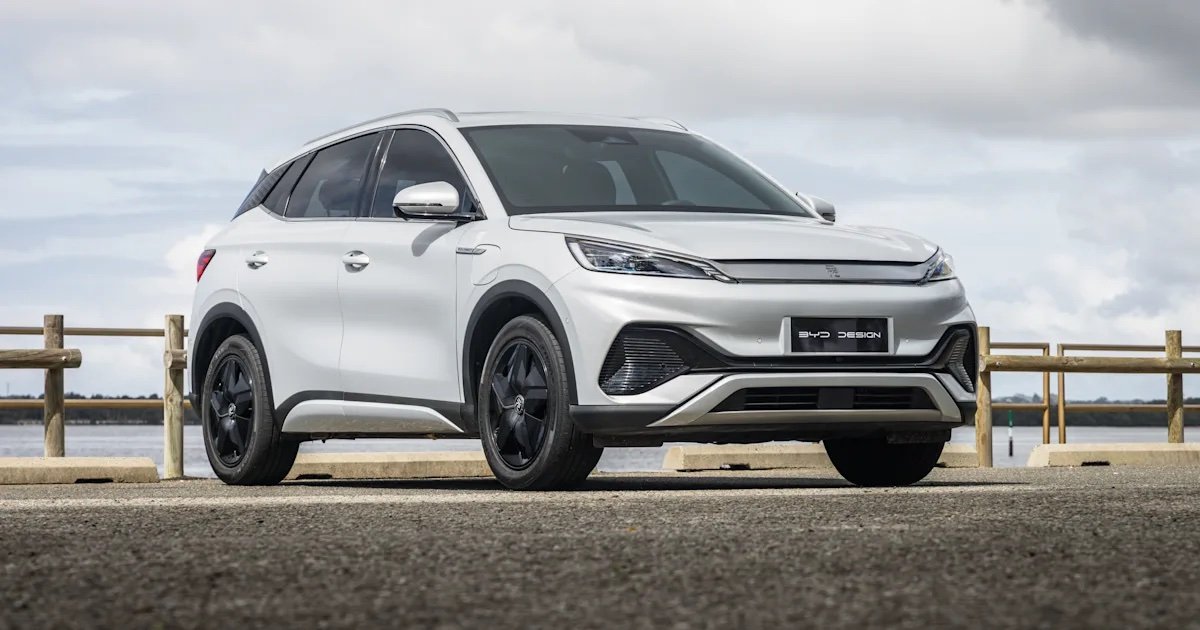
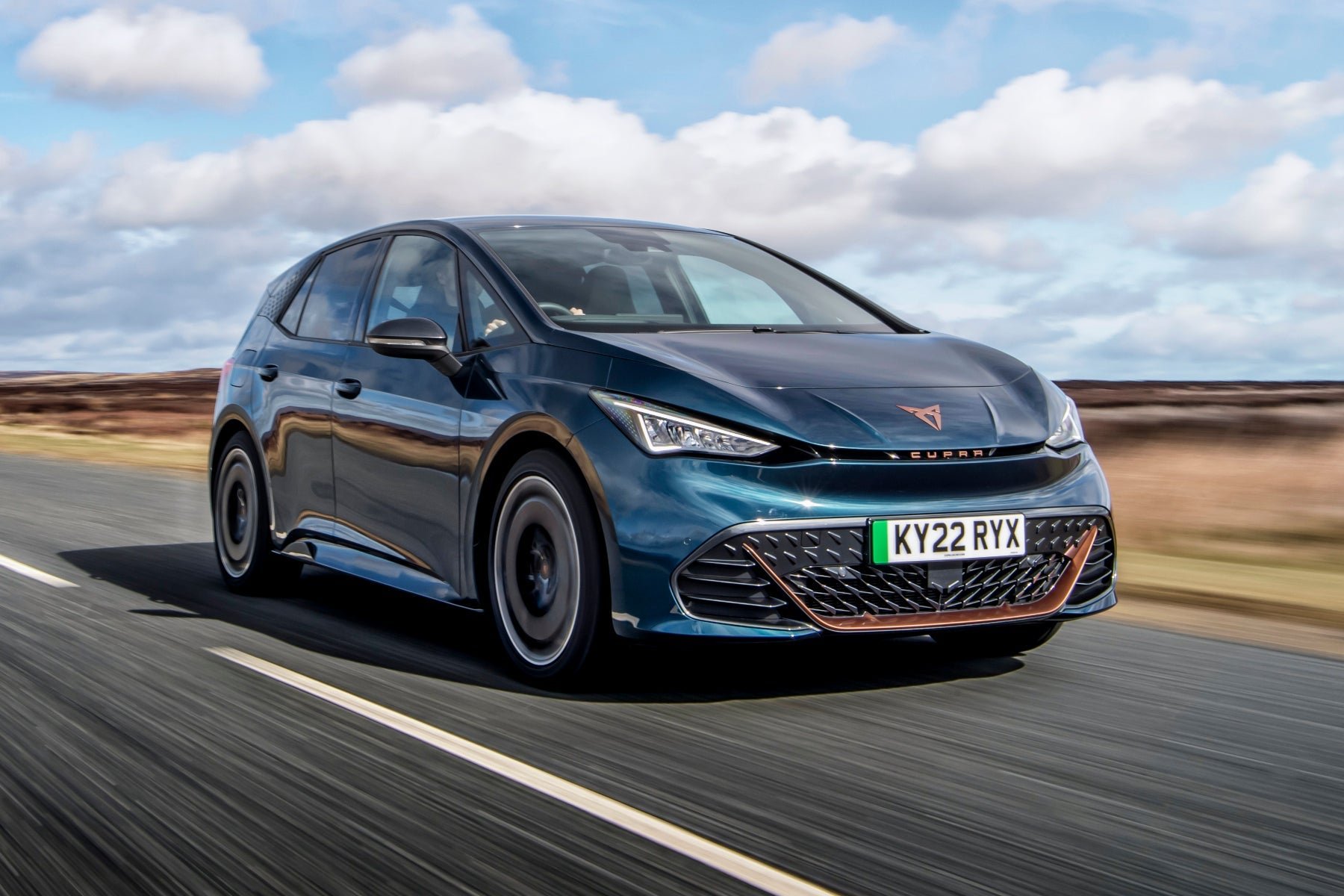

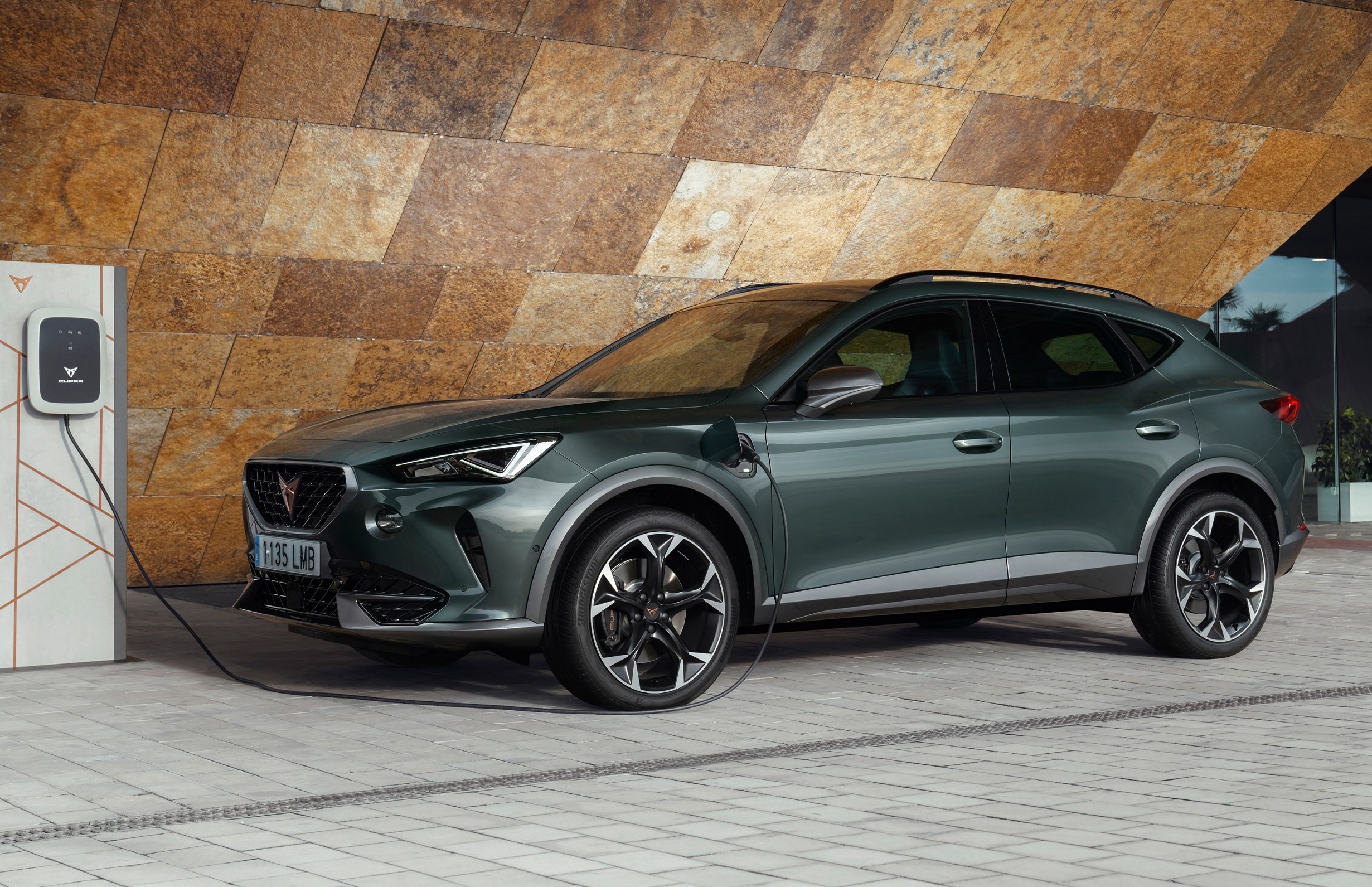




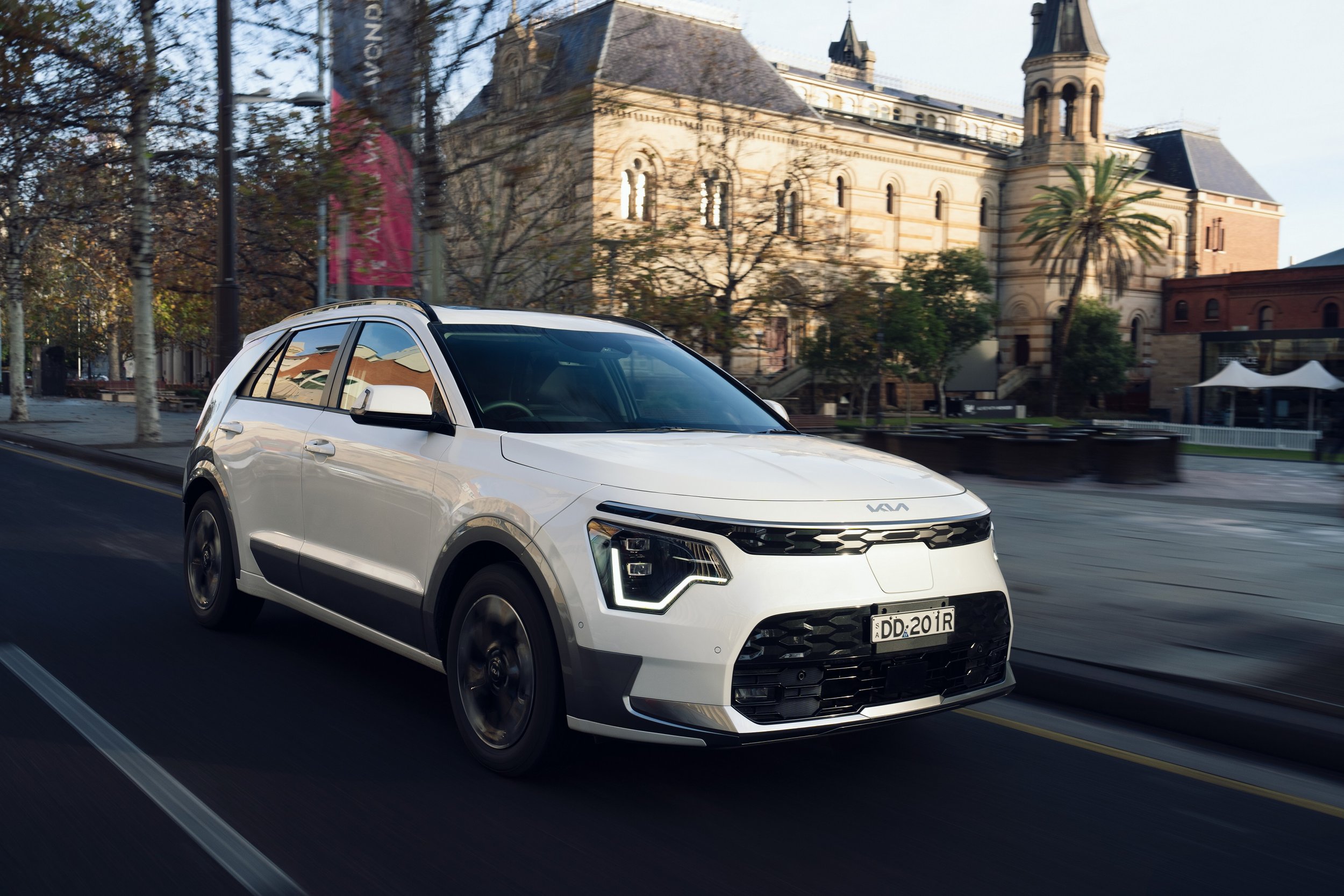



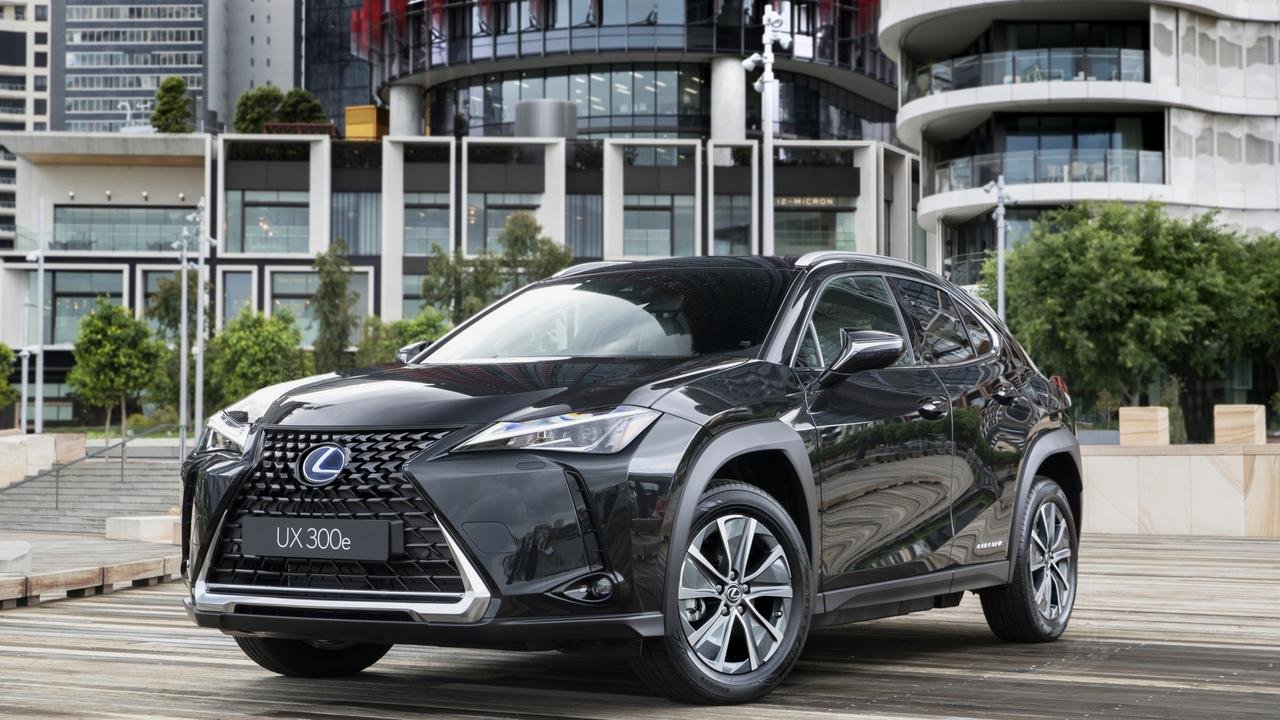

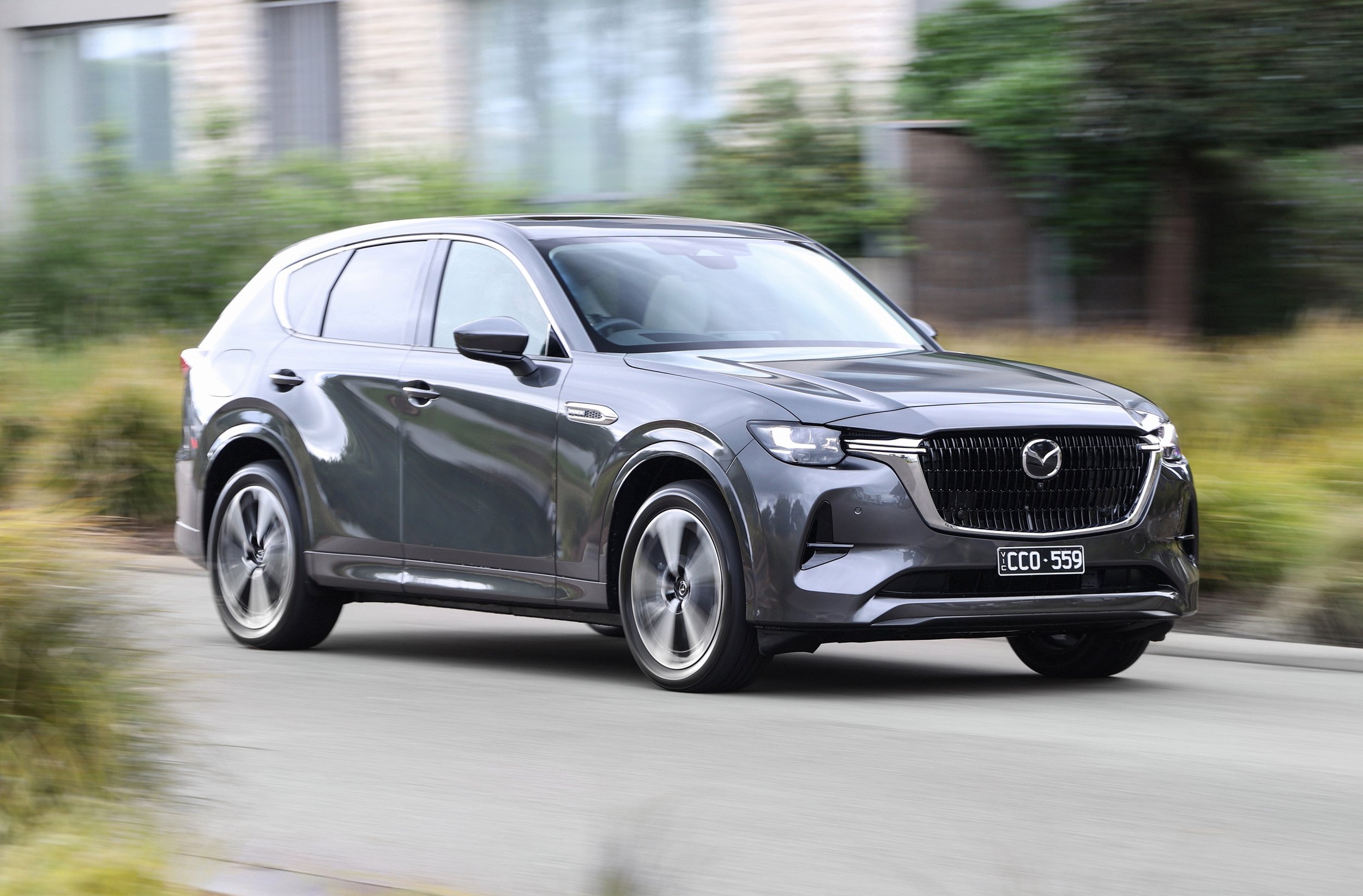
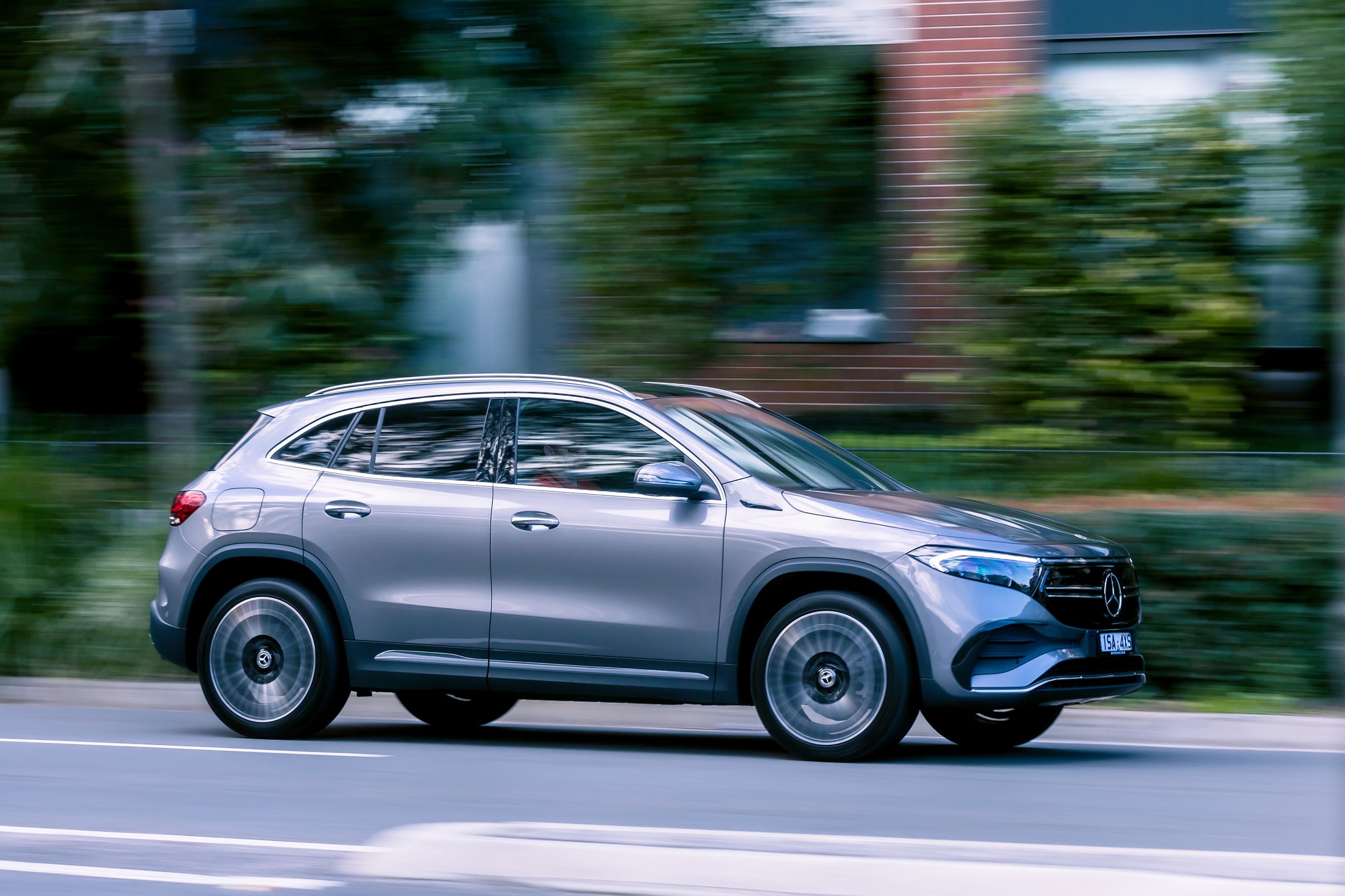





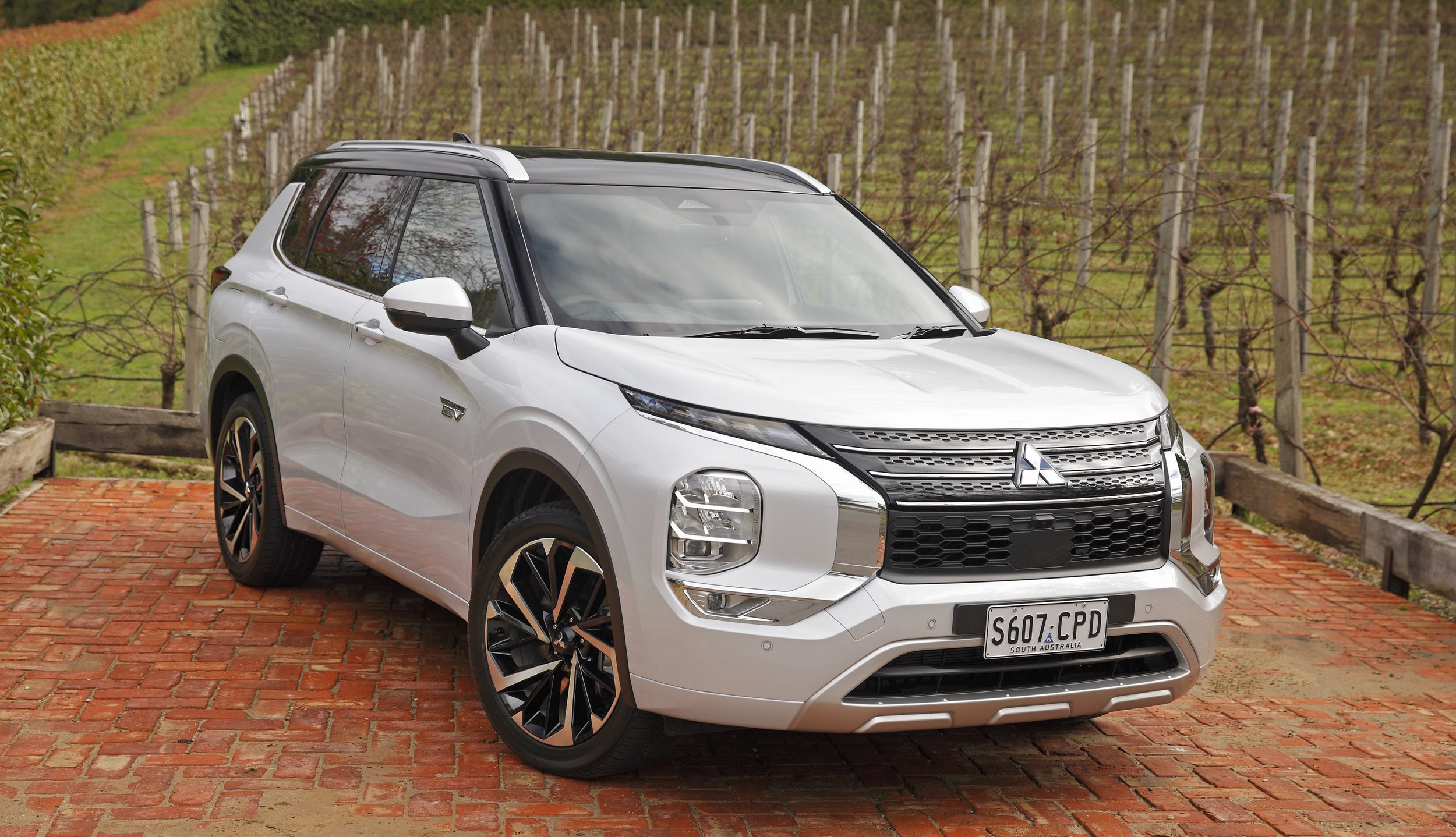





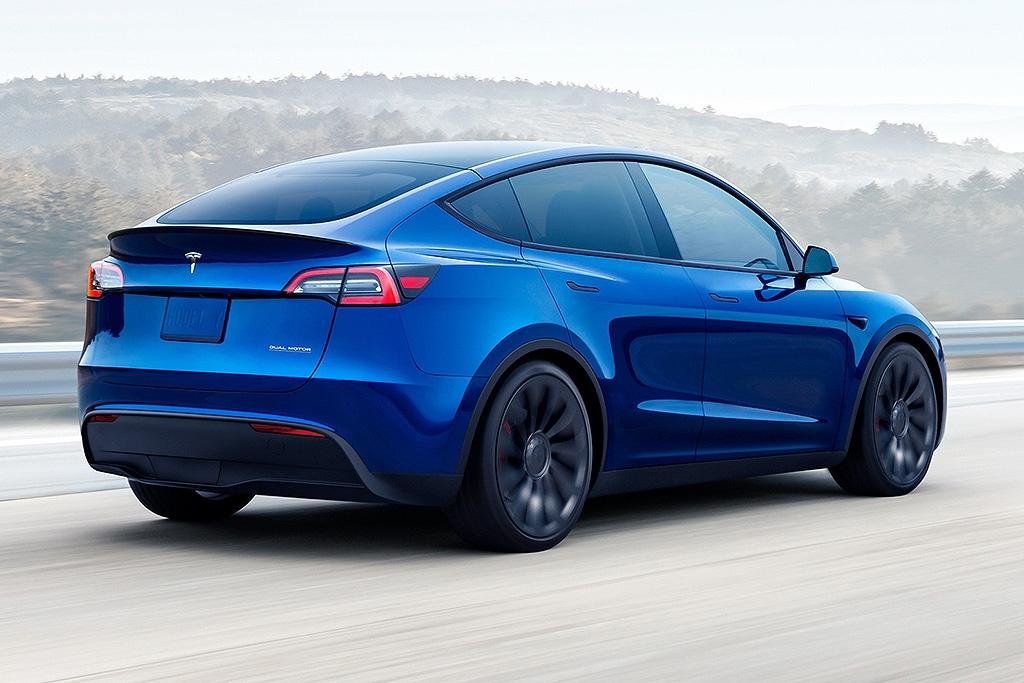













The MG ZS is a small SUV that offers such strong value to most buyers that it should be on your shortlist be default, even when shopping for a used car. But given that no car is perfect, the price could easily distract from its drawbacks.